June 2022 - You are accessing an old version of our website. The SDGs Voluntary Commitments have been migrated here: https://sdgs.un.org/partnerships
You will be redirected to the new Partnership Platform in 10 seconds.
June 2022 - You are accessing an old version of our website. The SDGs Voluntary Commitments have been migrated here: https://sdgs.un.org/partnerships
You will be redirected to the new Partnership Platform in 10 seconds.
The Sustainable Fashion Lab is a national, multi-sectoral platform for collaboration and innovation that consists of approximately 40 leaders and aims to address and transform the main challenges of Brazil’s fashion industry. The project was initially convened by an alliance consisting of Abit – the Brazilian Textile and Apparel Industry Association, ABVTEX – the Brazilian Association of Textile Retail, and the ILO – International Labor Organization, with the C&A Foundation in Brazil as a founding partner. Reos Partners coordinated the project. The Sustainable Fashion Lab contributes to the following Sustainable Development Goals.
Starting from the desire to transform several unacceptable and unsustainable aspects of the current reality of the clothing and fashion industry in Brazil, the 40-member Project Team created a Theory of Change (detailed at the end of this document) for Brazil’s Sustainable Fashion Lab. It defines the vision for 2027 (a fair and sustainable fashion industry) and targets for the next five and ten years. Also, the project aims at promoting the following in Brazil’s fashion industry:
o An in-depth and systemic understanding of industry risks and opportunities.
o Transformative strategies and actions that influence and affect the main challenges identified;
o Innovative, multi-sectoral initiatives that contribute to transforming the system;
o Strengthened relationships between key ecosystem stakeholders;
The first phase of the project had two main steps: the construction of scenarios describing possible futures for the fashion industry in Brazil and a Social Lab. The scenarios served as the foundation for the work developed by the team in the steps that followed. The team also created a system’s map of the fashion industry, identifying structures and mental models that contribute to why the system is as it is today. The next step was to identify leverage points, places in the system where a change can lead to significant improvements in the fashion industry over the next few years.
Based on the challenges and leverage points identified, the team divided itself into working groups (WGs) to co-create and prototype six multi-sectoral initiatives. The objectives of the initiatives are detailed below (the number of SDGs to which they contribute are in brackets):
WG 1: Education. To influence the syllabi of professional training courses for the industry offered by education institutions such as SENAI (National Service for Industry Learning) and other similar organizations, so that they include content on gender, equality, diversity, fair working condition and sustainability issues (SDGs: 4, 5, 8, 9, 10 and 11).
WG 2: Culture and consumerism. To raise awareness and engage both the market and society to establish fair working conditions in the fashion industry, more sustainable production processes and conscious consumption (SDG: 12).
WG 3: Product life cycle. To raise awareness about fashion products’ life cycles, and educate industry stakeholders on the environmental damage caused by their products through the creation of a clothing label with information on toxicity, water use and CO2 emissions (SDGs: 9, 12, 13, 14 and 15).
WG 4: Work and inequality. To develop, test and roll out a self-sustaining and replicable collective production model that breaks with the economic violence suffered by migrant women who work as seamstresses. This will be combined with a continuing education program that draws on the migrant seamstresses’ knowledge, experience and dreams (SDGs: 4, 5, 8, 9, 10, 12, 13, 14, 15 and 17).
WG 5: Business model. To establish sustainable and fair sales and buyer relationships throughout the entire supply chain of big fashion retail chains, as well as build mechanisms and commitments by retailers, suppliers and subcontractors (SDGs: 8, 9, 12 and 17).
WG 6: Public policies. To draft public policy proposals approved by the Fashion Lab Team and develop, and roll out an advocacy strategy for advancing these proposals (SDGs: 5, 8, 9, 10, 12, 13, 14, 15, 16 and 17).
The project was convened by an alliance consisting of Abit – the Brazilian Textile and Apparel Industry Association, ABVTEX – the Brazilian Association of Textile Retail, and the ILO – International Labor Organization, with the C&A Foundation in Brazil as a founding partner. Reos Partners coordinated the project.
Leaders were identified from across the system that best reflected the industry’s diverse perspectives and invited them to join the project team. They are from various sectors of the system, including: academia, retail brands, textile industry, industry associations, media, trade unions, foundations, international organizations, S System, public sector, civil society and Brazilian and Bolivian seamstresses.
Between January and June 2017, the Governance Council identified leaders from across the system that best reflected the industry’s diverse perspectives and invited them to join the Sustainable Fashion Lab team. The first phase of the project had two main steps: the construction of scenarios describing possible futures for the fashion industry in Brazil and a Social Lab.
As input to the process, 41 interviews were conducted with members of the team. Their main concerns, questions about the future and ideas for possible solutions to the challenges faced by the industry were summarized in a synthesis document. This material served as the foundation for the work developed by the team in the steps that followed.
Scenarios
Over the course of two workshops held between June and September 2017, four relevant, challenging, plausible and clear scenarios were constructed by the team. The scenarios outline possible futures for Brazil’s fashion industry in 2035 and aim to stimulate reflection and dialogue on the present and future of Brazil’s fashion industry.
Social Lab
Over the course of three 2,5-day workshops held between November 2017 and May 2018, the team engaged in a Social Lab Process. They worked on the Fashion Lab’s Theory of Change, to define the vision, expected results and impacts they wish to see in Brazil’s fashion industry by 2027.
The team also created a system’s map of the fashion industry, identifying structures and mental models that contribute to why the system is as it is today. The next step was to identify leverage points, places in the system where a change can lead to significant improvements in the fashion industry over the next few years. Based on the challenges and leverage points identified, the team divided itself into working groups (WGs) to co-create and prototype six multi-sectoral initiatives in the following area:
o Education, professional training, science and technology;
o Culture and consumerism;
o Product life cycle, intensive resource use and toxicity;
o Labor: working conditions, informal employment and migration; inequality of social status, ethnicity and gender;
o Business model, relationships within the fashion chain;
o Public Policies.
The team has since grown and become stronger. The initiatives originally developed by the team have turned into projects, with schedules and budgets.
Currently, the monitoring mechanisms in place are focused on the six multi-sectoral initiatives. In order to monitor their progress, follow-up cycles are regularly conducted to gather feedback, refine the proposal, and analyze the learnings. The results of the cycles are compiled and systematized. An evaluation partner was contracted for the project and developed a baseline, an evaluation matrix and indicators.
The following results were identified through an evaluation questionnaire sent to the Sustainable Fashion Lab Members: improved and closer relationships between the different stakeholders in the supply chain, and a shared commitment to addressing common concerns such as sustainability, fair working conditions and reduction of gender, ethnicity and class inequalities in the sector.
The Sustainable Fashion Lab Members reported that the most significant change generated so far by the lab has been the bringing together of the diverse stakeholders of the sector and an enabling environment to begin to collaborate (100% of survey respondents).
The Sustainable Fashion Lab has already begun to generate significant collaboration both among members and with other players in the fashion industry. 87.5 % of Fashion Lab members reported that they are involved in collaborative initiatives with other members, and 100% of members reported that the relationships that they have developed with the Lab have the potential to positively influence the sector. “I was able to make recommendations on improving the conditions of sewing workshops”, said a participant.
Currently, 43 actors, from 36 distinct and representative organizations are actively working on the Sustainable Fashion Lab platform. In 2018, the Sustainable Fashion Lab was present in 6 events of the fashion and apparel sector in Brazil: Sustainable Brands, XXI Academic Week of SENAI São Paulo, LATAM Retail Show, ABIT Congress, Brazil Eco Fashion Week and Textile Exchange Conference.
Among the enabling conditions is the existence of a committed group who sees that diversity is the key to changing the system that they are in. Also, some other relevant individual characteristics present in the group are: a strong personal drive to make change, willingness to take risks and collaborate outside of their comfort zone, and shared ownership of the process. The existence of a strong convening alliance and founding partner was also a crucial aspect to the success of the initiative. For the next phase (2019-2020), co-financing is currently a constraint to be overcome. The team is exploring ways to go beyond traditional fundraising to include other financial mechanisms to contribute to the financial sustainability of the project as a whole and to new and existing transformative initiatives.
Another important condition is the existence of a systemic, collaborative, creative, and experimental process, designed to embrace and leverage the diversity of the stakeholders and their interests. The Sustainable Fashion Lab was able to leverage:
o Collaborative alliances: stakeholders shifted from being unwilling or unable to work together, to building their capacity to work together across differences.
o Systemic insights: stakeholders shifted from seeing and understanding only part of what is going on, to broadening and deepening their understanding of what is happening and could happen.
o Transformative actions: stakeholders shifted from acting in a way that keep things the way they are, to acting—separately and together—to change what is happening.
The Fashion Lab platform is transitioning to a new level of collaboration, and is looking to increase its number of participants and partners, as well as its connections with other initiatives, efforts and movements engaged in the cause of sustainable fashion.
The objectives for the next phase of the Fashion Lab (2019-2020) are:
1) to become a long-term platform for innovation, learning and collaboration
2) develop, strengthen and scale new and existing solutions
3) contribute to creating favorable conditions for the transformation of the sector, influencing public policy and creating investment mechanisms in sustainable solutions
4) continue to strengthen relationships between key players in the fashion ecosystem and stimulate more dialogue, cooperation, co-responsibility, partnerships and collaborative networks.
The activities for the next phase include: regional and national workshops, learning journeys, workshops to develop solutions for sectoral challenges, development of prototypes, acceleration of new and existing initiatives, a communications platform, participation in national and international events to share Sustainable Fashion Lab learnings, development of financial mechanisms and strategies, and monitoring and evaluation.
The C&A Foundation in Brazil and the International Labor Organization have committed funding for the next phase which will be complemented by other organizations in the fashion industry.
This process has created unlikely relationships across value chains in the fashion industry in Brazil, new understandings and new ideas, opening new possibilities for creating a fashion industry in Brazil that is environmentally, socially and economically sustainable and just.
The Sustainable Fashion Lab will continue as a platform and seeking to follow the objectives defined by the Theory of Change, detailed below:
Vision 2027: a fair and sustainable fashion industry
In 5 years:
o Strong relationships between players and networks, supporting fair, transparent and sustainable business practices on both a regional and national level
o Lab team members with a deeper understanding of and a greater capacity to influence change in the industry
o Investment mechanisms for sustainable solutions in the industry
o Public policies are integrated into project initiatives
o Robust sustainable solutions and businesses, with potential to scale up
o Professionals are more qualified to work in this industry and to deal with its specific demands
o Industry workers are more knowledgeable about the supply chain and its challenges
In 10 years
o Better living and working conditions in this industry, with greater gender, racial, and place of origin equity
o Improved profitability of this industry’s small and medium-sized companies
o Consumers increasingly guided by conscious consumption standards
o Natural resources used more wisely and sustainably
o Financial resources for impactful solutions that are more available, accessible and stable
o Creation of public policies that support industry innovation and sustainable development
o Fairer and more sustainable purchasing practices across the supply chain
o Reduced rates of informal work in the industry
Project Website: https://labmodasustentavel.org.br/
Published articles:
http://www.ilo.org/brasilia/noticias/WCMS_562267/lang--pt/index.htm
http://www.abit.org.br/noticias/oit-abvtex-e-abit-lancam-laboratorio-de-moda-sustentavel
https://www.ufrgs.br/iicd/2017/11/01/lancado-o-laboratorio-da-moda-sustentavel/
http://revistavarejosa.com.br/lab-moda-sustentavel-a-iniciativa-consciente/
https://slowly.com.br/laboratorio-da-moda-sustentavel/
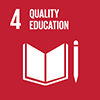
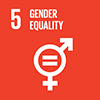

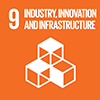


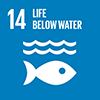

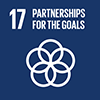
 Start: 01 January, 2017
Start: 01 January, 2017 Completion: 31 December, 2020
Completion: 31 December, 2020